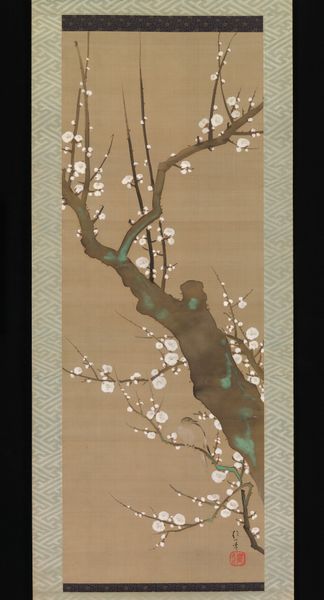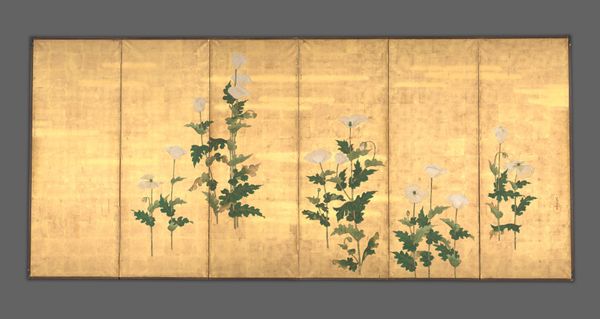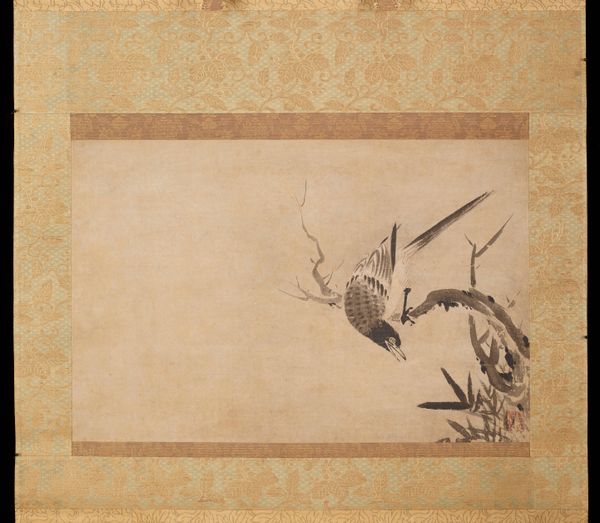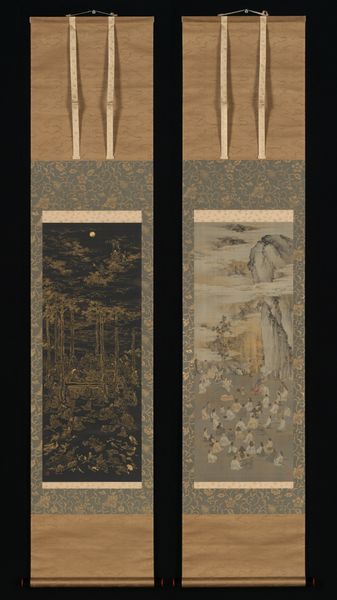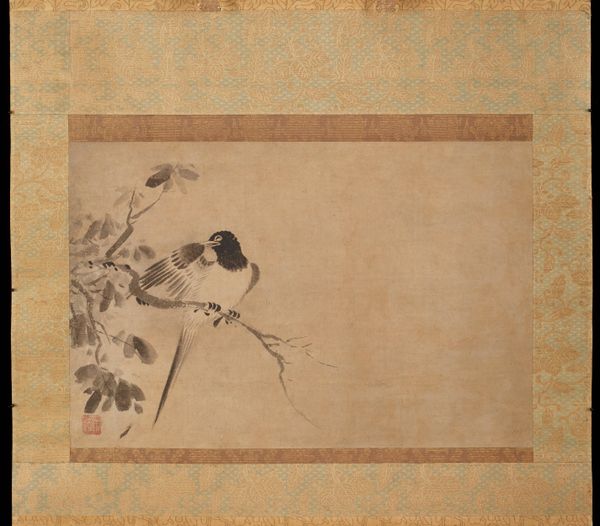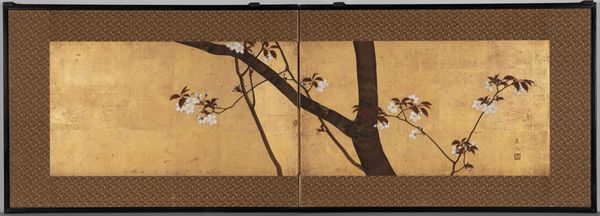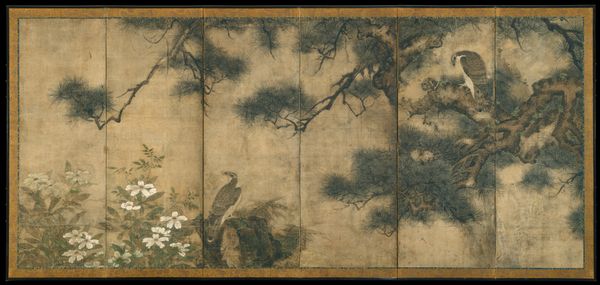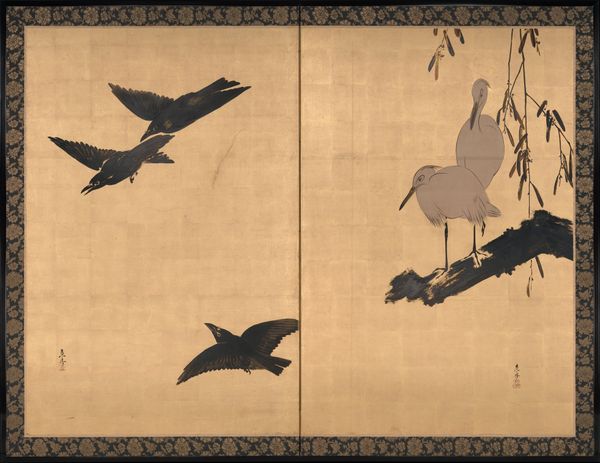
painting, plein-air, watercolor
#
tree
#
painting
#
plein-air
#
asian-art
#
landscape
#
flower
#
japan
#
watercolor
#
watercolor
Dimensions: Image: 38 x 82 3/16 in. (96.5 x 208.8 cm) Overall with mounting: 39 9/16 × 83 3/4 in. (100.5 × 212.8 cm)
Copyright: Public Domain
Editor: Right now we’re looking at Sakai Hoitsu's "Blossoming Cherry Trees," dating back to sometime between 1795 and 1815. It’s currently held at the Metropolitan Museum of Art. It's a Japanese watercolor on a six-panel screen, depicting just a few branches in bloom. The gold background is quite striking and contributes to a sense of simple elegance. What do you see in this piece, particularly from a historical perspective? Curator: Well, it's impossible to view this without considering its historical context. Screens like this served a dual purpose: as functional room dividers and as showcases for artistic expression, heavily influencing the perception of spaces and hierarchy. Notice how the artist is drawing upon plein-air techniques. Editor: Yes, I noticed the plein-air influence too. How would this type of artwork have been received back then by the public or specific social groups? Curator: Good question! This piece likely appealed to a refined, aristocratic audience, due to its minimalist aesthetic that embraces wabi-sabi sensibilities – finding beauty in imperfection and impermanence. This aligns with the tea ceremony's increasing significance and broader trends of simplification within Japanese society during that era. It probably wasn't something the masses encountered or appreciated regularly. Instead it likely lived inside an important dwelling. How do you see that impacting how we should think about the art of the time? Editor: That makes so much sense. I didn't think about who might have been able to enjoy it, and in what contexts. Understanding that makes me appreciate its subtleties even more. Curator: Exactly! Thinking about art's intended audience and its place in social structures really unlocks deeper understandings of its cultural significance. It moves our perception of art into new contexts.
Comments
No comments
Be the first to comment and join the conversation on the ultimate creative platform.

